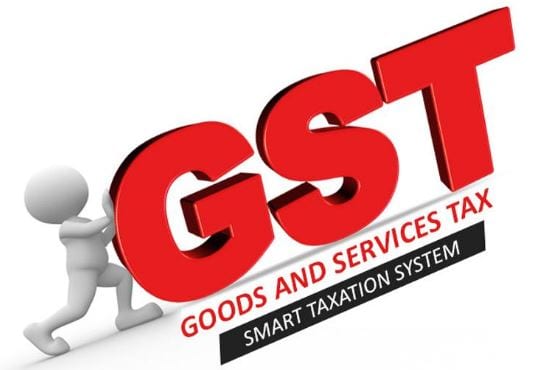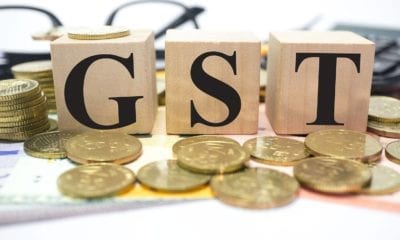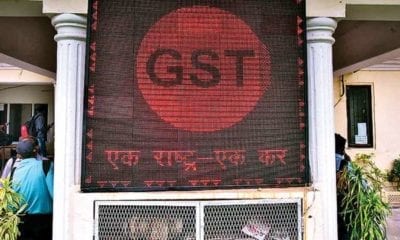Taxation
GST’ Impact on People & Businesses

Goods and Services Tax (GST) is ON, replacing almost 20 state and federal taxes. Now, it is going to change the fate of all businesses and lives of every Indian in many ways and some of them in a disruptive way.
1) A transparent tax reform
For the first time, through the form of a single GST rate consumers will have the knowledge of the actual amount of taxes they are paying for goods and services. The GST rate will be split between central and state governments. Earlier, an invoice included the state-level value added tax (VAT) and in certain cases, the service tax levied by the central government, which excluded taxes on raw materials and services used by various intermediaries. These taxes were added to the final price of the goods purchased but were not mentioned in the invoice. The efficiency of GST is expected to minimize the tax burden and encourage the transparency.
2) Transition in tax burden
The effort is for keeping the GST rates as close as possible to the existing tax burden on goods and services and to make the transition revenue neutral. Therefore, the effective tax on individual products or goods is expected to move up or down. Tax on services like telecom is expected to go up. However, actual changes will depend on the pricing strategies adopted by the businesses.
3) Unorganized sector at a turning point
Small enterprises with annual sales less than Rs 20 lakh are exempt from the rigors of registering for GST and filing returns. But this exemption poses a risk of larger enterprises turning away from the unorganized sector for sourcing materials and services to larger suppliers that are within the GST system so that taxes paid by their suppliers are available as credit. Small enterprises have to voluntarily sign up for GST to not lose their customers. Larger procurers looking forward to keep ties with the unorganized sector, however, have the choice of paying taxes on their behalf under a system called ‘reverse charge’. Small businesses being a part of the GST system is expected to enhance tax compliance not only of indirect taxes, but also of income tax.
4) Impact on Small and medium enterprises (SMEs)
The tax burden for SMEs is set to go up. With the threshold for GST registration for businesses being much lower at Rs20 lakh annual sales, SMEs will come under GST and have to pay taxes at the federal level too—the central GST. This is expected to double the tax rate for them, although the actual increase in tax burden may not be equally high because of the tax credits passed on to them from their material and service suppliers. GST is devised to broaden the taxpayer base with a vision of minimizing the overall tax rate.
5) No more tax breaks
There is no more excise duty exemption for setting up production units in the north east or hill states. Enterprises will have to make investment decisions based on scale of economy rather than tax arbitrage. This indicates that enterprises will have to set up new production units closer to their market rather than expanding existing facilities in places to leverage on region specific exemption. Units that have already come up with excise exemption for a specified period will have to pay tax first and claim refunds for the remaining period. Mostly the drug makers, automobile producers and cement companies will be affected more as they prefer to set units in hill states earlier.
6) Revamping supply chain
GST will also affect the businesses in terms of its location of warehouses and movement of goods from state to state. As GST is applicable on transfer of stock within a group company’s warehouses in different states, it is expected that businesses may try to optimize their supply chain.
7) Keeping on Right Side of Law
Businesses and traders have to work hard on their pricing strategy during the transition period to avoid getting caught for not passing on any reduction in effective tax burden to the consumer. An anti-profiteering body being set up will keep an eye on how businesses restructure the tax inclusive price charged from consumers.
8) Training vendors, workforce
People in the entire business ecosystem of a company need to be trained. Companies have to not only update their business, accounting and tax payment software, but also train their personnel. Training vendors and business partners is also important as the invoices they file are relevant for the taxes to be paid by a business.
9) Return filing
While suppliers have to upload details of transactions and invoices, the tax return of buyers of goods and services will be auto-generated based on suppliers’ data, minimizing human discretion. Buyers can either accept auto-generated return or modify it.
10) Alcohol and fuel
Alcohol and five fuels including crude oil, petrol, diesel, jet fuel and natural gas are expected to see an increase in tax burden as they continue to remain in the existing tax system, while the GST paid on all equipment and services used in their production become an added cost.
(A compiled report)








































